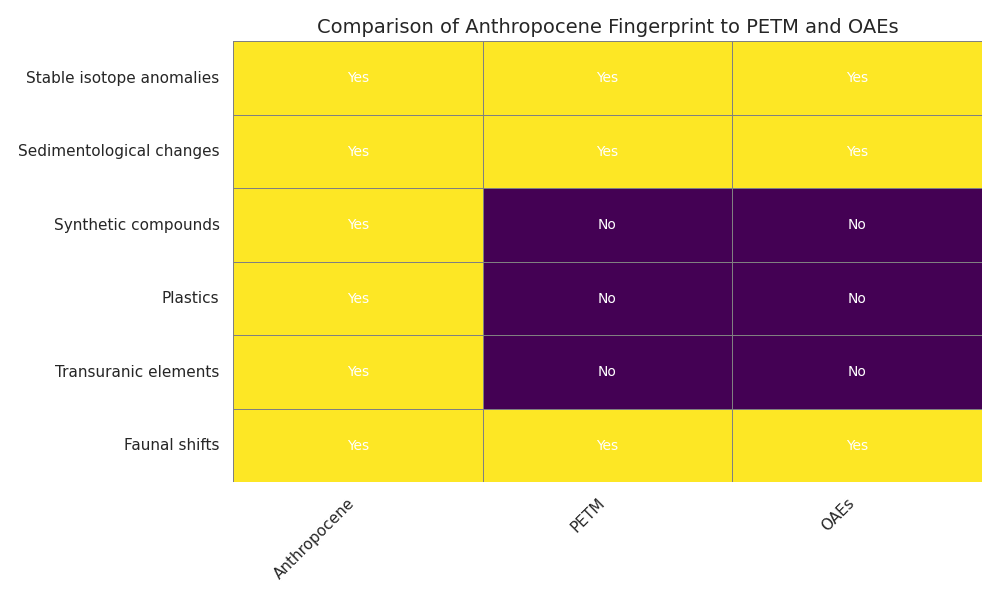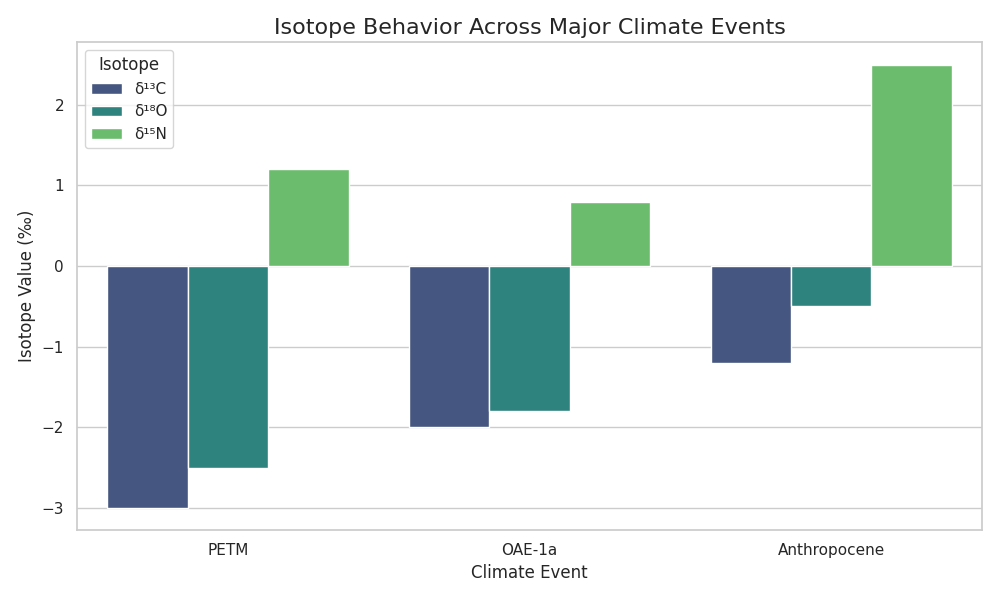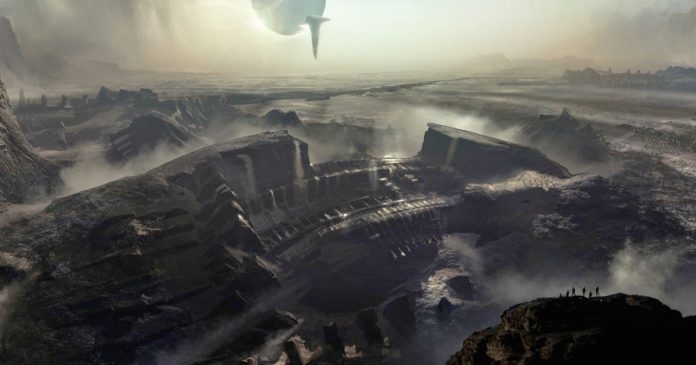A Civilization Lost to Time?
In their 2018 paper introducing the Silurian hypothesis, NASA climatologist Gavin Schmidt and astrophysicist Adam Frank explored whether traces of a past industrial civilization could be detected in Earth’s geological record. Rather than asking if such a civilization existed, they questioned whether its remnants would even be recognizable millions of years later.
Their approach was grounded in astrobiology and Earth system science. They examined the Anthropocene signal (the suite of geological fingerprints our current civilization is leaving behind) and asked: “Would similar signals be detectable millions of years from now?“
The Anthropocene signal includes:

- Synthetic compounds like plastics and CFCs
- Transuranic elements from nuclear activity
- Carbon isotope excursions from fossil fuel combustion
- Sedimentological changes from agriculture and urbanization
- Faunal turnover and extinction events
These markers are specific to our technological path. But what if a prior civilization followed a different trajectory; one that didn’t rely on fossil fuels, plastics, or nuclear energy? What if its footprint was clean, ecological, and geochemically subtle?
This article explores that possibility. We’ll examine what a “clean” civilization might leave behind, why certain geological events like the PETM (Paleocene–Eocene Thermal Maximum) and OAE (Oceanic Anoxic Events) -1a raise intriguing questions, and why (especially from an engineering perspective) the spikes in industrial metals may be the most compelling signal of all.
Clean Civilizations: What Would They Leave Behind?
Through targeted inquiry, we explored what a “clean” industrial civilization might imprint geologically. The goal was to identify non-synthetic, non-chemical markers that still reflect large-scale energy use and biosphere manipulation.
Expected Fingerprints of a Clean Civilization:
| Marker Type | Expected Signature |
| Carbon Isotope Shifts | From biomass use or land change |
| Oxygen Isotope Shifts | Reflecting climate alteration |
| Nitrogen Isotope Shifts | From agriculture or ecosystem engineering |
| Sedimentological Changes | Erosion, clay deposition, ocean dead zones |
| Metal Concentrations | Elevated vanadium, chromium, molybdenum from mining or manufacturing |
| Faunal Turnover | Rapid spread of commensal species, extinction of sensitive taxa |
| Mineralogical Shifts | Strontium/osmium ratio changes from land disturbance |
| Synthetic Compounds | Absent—no plastics, CFCs, or transuranics |
Metal Spikes: The Red Blinking Light
As an engineer with a background in manufacturing, one signal stands out above the rest: metal anomalies. In the geological record, sudden spikes in metals like vanadium, chromium, molybdenum, nickel, and cobalt are often attributed to volcanic activity or ocean chemistry shifts. But from a manufacturing perspective, these metals are not random, they’re industrial metals, used in alloys, catalysts, and high-temperature applications.
Why It Matters
- Vanadium: Used in steel alloys and aerospace components.
- Chromium: Essential for stainless steel and corrosion resistance.
- Molybdenum: Key in high-strength alloys and lubricants.
- Nickel & Cobalt: Crucial for batteries, magnets, and electronics
These metals don’t just appear in nature in concentrated form. They require refining, extraction, and distribution, processes that leave behind telltale geochemical signatures. If we see sudden, localized spikes in these metals without a clear volcanic or tectonic trigger, it raises a compelling question: Could this be the residue of ancient industry?
Visual Comparison: Metal Anomalies Across Epochs
| Epoch/ Event | Vanadium | Chromium | Molybdenum | Nickel | Cobalt | Synth Comps |
|---|---|---|---|---|---|---|
| Anthropocene | ✅ | ✅ | ✅ | ✅ | ✅ | ✅ |
| PETM (~56 Ma) | ✅ | ✅ | ✅ | ⚠️ | ⚠️ | ❌ |
| OAE-1a (~120 Ma) | ✅ | ✅ | ✅ | ✅ | ✅ | ❌ |
Interpretation: OAE-1a shows a full suite of industrial metals; without synthetic compounds. That’s a red blinking light for anyone familiar with manufacturing processes.
Geological Anomalies That Fit the Profile
Two major events in Earth’s history exhibit many of these markers, raising the question: Could they represent more than just natural upheaval?
PETM (Paleocene–Eocene Thermal Maximum)
- Occurred ~56 million years ago
- Rapid global warming (+5–7°C)
- Massive carbon release (−3‰ δ¹³C excursion)
- Ocean acidification and faunal turnover
- Increased erosion and clay deposition
- Metal spikes (V, Zn, Mo, Cr)
Interpretation: PETM mirrors many clean civilization markers. While volcanic activity is the leading explanation, the abruptness and coherence of the signal leave room for alternative interpretations.
OAE-1a (Oceanic Anoxic Event)
- Occurred ~120 million years ago
- Widespread ocean deoxygenation
- Black shale deposition and euxinia
- Carbon and nitrogen isotope anomalies
- Metal spikes (As, Bi, Cd, Co, Cr, Ni, V)
- Faunal shifts and extinction pulses
Interpretation: OAE-1a presents a remarkably tight alignment with the clean civilization fingerprint. The absence of synthetics doesn’t contradict intelligence—it simply makes it harder to prove.
A Thought Experiment: The “Geotherians” of OAE-1a
Imagine a species much like the fictional “Silurians” the hypothesis is named after, intelligent, technologically capable, and long buried beneath the strata of deep time. But for our thought experiment, we’ll call this hypothetical civilization the “Geotherians.”
During the early Cretaceous, this civilization may have thrived by harnessing geothermal and solar energy, developing advanced metallurgy and ecological engineering. No plastics, no fossil fuels, no nuclear waste. Yet their activities still altered the biosphere.
Their infrastructure likely clustered around tectonic boundaries, where geothermal gradients were strongest. Industrial traces would be subtle: localized metal anomalies from deep drilling, isotopic shifts from carbon cycling, and mineralogical disturbances in ancient heat-exchange zones. Unlike the abrupt, multi-variate signal of the Anthropocene, the Geotherians’ legacy would be faint; distributed across sedimentary layers and easily mistaken for natural variation. If they emerged during the OAE-1a interval (~120 Ma), their footprint may be buried within the very anoxic sediments that preserved the organic matter they helped redistribute.
Isotopic Legend: Decoding the Chemical Echoes of Deep Time
Before diving into the Geotherians hypothetical imprint on Oceanic Anoxic Event 1a (OAE-1a), it’s essential to understand the isotopic clues that scientists use to reconstruct ancient worlds. These symbols represent stable isotope ratios, subtle shifts in atomic composition that act like forensic traces of environmental change, biological activity, and even potential civilization-scale disruptions.
| Symbol | Isotope Pair | What It Reveals | Possible Geotherian Signature |
|---|---|---|---|
| δ¹³C | Carbon-13 / Carbon-12 | Carbon cycle shifts—volcanism, methane release, biomass changes | Sudden carbon injection or synthetic carbon sources |
| δ¹⁸O | Oxygen-18 / Oxygen-16 | Paleotemperature and ice volume; ocean salinity | Climate engineering or thermal anomalies |
| δ¹⁵N | Nitrogen-15 / Nitrogen-14 | Nutrient cycling, marine productivity, anoxia | Agricultural runoff, synthetic fertilizers, or ecological collapse |
Their geological legacy might include:
- δ¹³C and δ¹⁸O shifts from land use and climate manipulation
- δ¹⁵N anomalies from agriculture
- Metal spikes from mining
- Sediment changes from infrastructure
- Faunal turnover from ecological disruption

This speculative scenario aligns almost perfectly with the OAE-1a record. The coherence of the signal (across isotopes, sediments, metals, and biota) suggests a disruption that may not be purely geological.
Why It Matters
The Silurian Hypothesis challenges us to rethink what civilization looks like—not just in terms of technology, but in terms of legacy. If intelligence can arise more than once, and if its footprint can be subtle, then our geological record may hold more mysteries than we realize.
For researchers, this means re-examining past anomalies with a broader lens. For skeptics and watchdogs, it means demanding reproducibility and transparency in how we interpret the deep past. And for storytellers, it opens a new frontier of possibility; where ancient intelligence may have come and gone, leaving behind only whispers in stone.
Final Thoughts
The absence of synthetic compounds doesn’t rule out civilization. It simply forces us to look deeper at isotopes, sediments, metals, and ecological patterns. The Silurian Hypothesis isn’t proof of ancient intelligence. But it’s a framework for asking better questions.
And sometimes, asking the right question is the most intelligent thing we can do.

